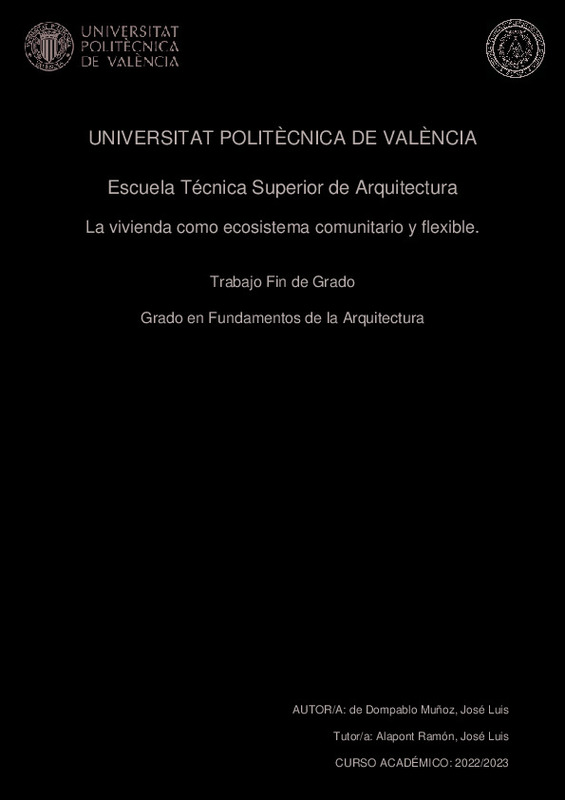JavaScript is disabled for your browser. Some features of this site may not work without it.
Buscar en RiuNet
Listar
Mi cuenta
Estadísticas
Ayuda RiuNet
Admin. UPV
La vivienda como ecosistema comunitario y flexible.
Mostrar el registro completo del ítem
De Dompablo Muñoz, JL. (2023). La vivienda como ecosistema comunitario y flexible. Universitat Politècnica de València. http://hdl.handle.net/10251/199560
Por favor, use este identificador para citar o enlazar este ítem: http://hdl.handle.net/10251/199560
Ficheros en el ítem
Metadatos del ítem
| Título: | La vivienda como ecosistema comunitario y flexible. | |||
| Otro titulo: |
|
|||
| Autor: | de Dompablo Muñoz, José Luis | |||
| Director(es): | ||||
| Entidad UPV: |
|
|||
| Fecha acto/lectura: |
|
|||
| Resumen: |
[ES] El estudio se plantea desde la necesidad de establecer un cambio en el modelo actual de producción de la vivienda, un modelo de vivienda totalmente rígido y jerarquizado que no permite apenas la adaptabilidad o ...[+]
[EN] The study is based on the need to establish a change in the current housing production model, a totally rigid and hierarchical housing model that hardly allows for adaptability or transformation of spaces.
It is ...[+]
|
|||
| Palabras clave: |
|
|||
| Derechos de uso: | Reserva de todos los derechos | |||
| Editorial: |
|
|||
| Titulación: |
|
|||
| Tipo: |
|
recommendations
Este ítem aparece en la(s) siguiente(s) colección(ones)
-
ETSA - Trabajos académicos [4687]
Escuela Técnica Superior de Arquitectura







